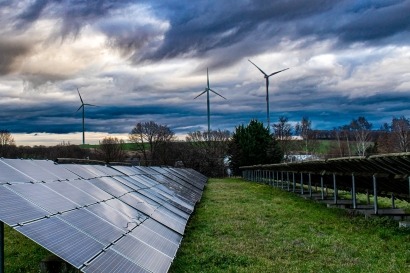
How Are Renewable Energy Sources Competing?
Assessing success requires analysis of expansion and power production across nations. How are some of the most well-known renewable energies doing?
Solar Power
Solar is experiencing global growth. Cost is a driving factor, as panels have dropped by 90% in the last decade alone. This, paired with government incentives, makes it accessible to more citizens and corporations than before.
With easy installation and straightforward manufacturing, getting solar on top of rooftops and integrated with buildings has never been swifter. Australia’s rooftop photovoltaics (PV) overtook coal energy in 2024, with 3.6 million homes producing power from the sun.
Wind Power
Wind is a unique case in the global renewable conversation because of the potential for offshore turbines. Onshore resources have already become a mainstay in many countries. Expansion is not as fast as solar because of more zoning and permitting challenges to prevent problems with aircraft. Regardless, it is a notable power contributor, making 117 gigawatts in 2023 worldwide. Plus, it has more room to grow than most because of wave power.
Hydroelectric
Hydropower has been around for so long that experts have refined it. Constructing a dam is almost second nature to many engineers and energy professionals. The technology’s maturity gives it an advantage in the global market. It may not be as simple to install as a solar panel, but its efficiency is incomparable to most other generators. It is a reliably high-power source, with many new dams still breaking ground worldwide.
Geothermal Energy
Heat pump technology has started to gain traction in some areas. Legislative action has made the equipment cheaper for some, but it is still out of most people’s price ranges. It only contributes a minuscule percentage of the planet’s energy. However, places that have capitalized on it, like Iceland, are reaping the benefits of enhanced geothermal systems.
Biomass
Biomass and biofuels have the potential to be one of the most versatile and complementary renewable energy sources, but they still need research. They are a viable source of heat and electricity, and their environmental impact depends on feedstock. Biomass will enter more people’s homes as agricultural availability and alternative growing methods expand.
What Improvement Areas Hinder Progress?
What are the drawbacks preventing each generator from reaching its full potential and usurping fossil fuels for good?
Solar Power
Space and intermittency are the primary obstacles to solar’s success, with resource scarcity being another. Land use debates litter solar expansion arguments, as solar farms comprise hundreds of acres. Some believe the land should be used for agriculture or urbanization.
Simultaneously, citizens are concerned about cloud cover, nighttime performance and seasonal capacity of their panels. Technologies are becoming increasingly more competent to deal with these factors, but perfection is far off.
Wind Power
Wind suffers from the same land use and intermittency complaints as solar, but it also must endure the spread of misinformation. Noise pollution and biodiversity declines — primarily bird populations — are the focal points of many wind power dissenters. These ideas have spread throughout society but are often dramatized. Spreading knowledge of turbines’ genuine noise and wildlife impacts is vital. Otherwise, it will not grow.
Hydroelectric
Hydropower is mighty and has an equally prominent impact on nearby habitats. Large-scale dams displace species and alter water flows, forever changing the lives of aquatic creatures. Waterways are more susceptible to environmental shifts because of these changes, such as excess evaporation leading to drought. This would make the dam's high operating costs less worth it during ecological extremes.
Geothermal Energy
While several types of geothermal installations are not invasive, some regions with limited accessibility could unearth more than they bargained for. Installations could produce seismic activity, putting nearby communities and habitats at risk.
Biomass
Producing the feedstocks biomass needs to thrive could take up considerable agricultural lands. Therefore, greenhouse gas emissions and resource depletion hinder biomass from excelling. While innovations attempt to divert attention away from this by suggesting landfill waste and biogas as viable, more is needed to be commercialized to permeate public awareness.
Which Generator Will Dominate?
Based on these reviews, solar or wind power is the most likely winner of the renewable energy battle. They have the most density at the moment. While this may not indicate future popularity, their historical development suggests their spread will continue.
The cost and availability of research are another contributing factor. Compared to geothermal, biomass and other options, there are more eyes on these two fields. The dedicated attention will ascend them deeper into technological advancements and lowered costs. The last several decades have proved how the cost decline of solar panels, in particular, has impacted their success. The market will be worth $223.3 billion at the end of 2025.
Policy support is the most critical reason these two are most likely to outcompete everything else. Regulatory action has already taken place in numerous countries to support these technologies' manufacturing, cost regulation and adoption.
There is less resistance to establishing further action because of these precedents. Wind and solar are simpler to scale than generators like biomass or geothermal, making them more versatile and desirable to constituents’ interests.
The Winner
While wind and solar may be the most dominant in the coming years, this does not mean the other alternatives will lose relevance. Climate resilience and renewable momentum require a broad portfolio of clean energy contributors. This includes up-and-coming resources like hydrogen electrolysis, which are still far from commercialization. However, the complementary nature of solar and wind to other renewable sources will make them ascend above the rest.

